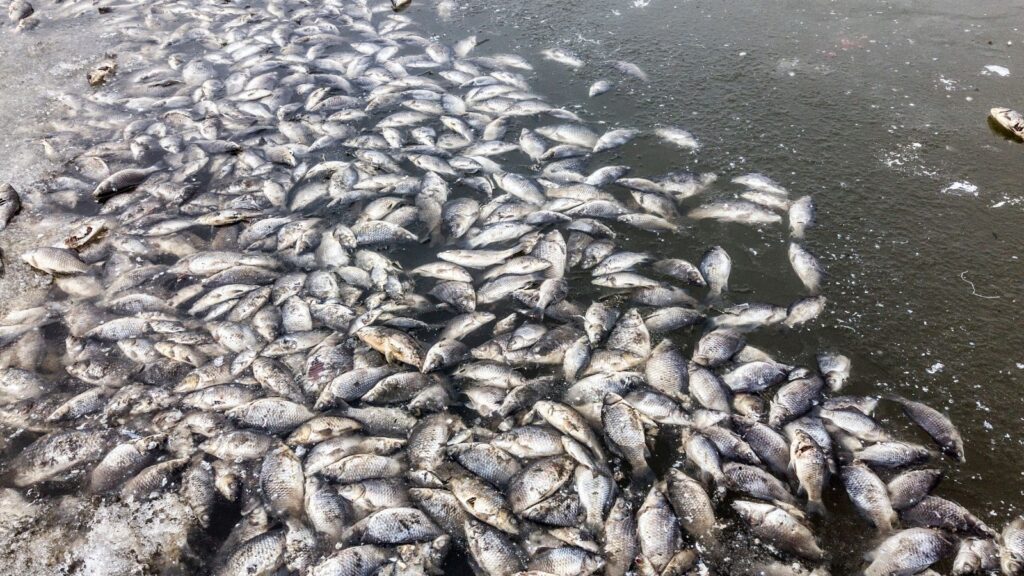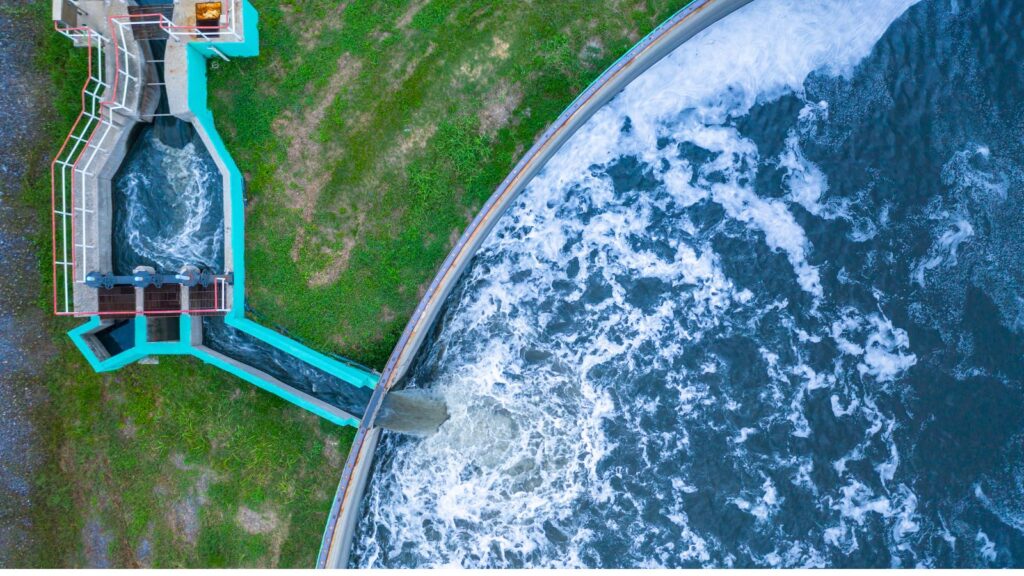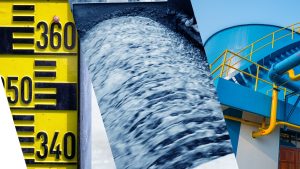Are you constantly worried about the possible Cyanobacteria growth in the waterways that is under control in the present times? Though it is sleeping at the moment it does not mean that the Cyanobacteria outbreak will not raise its head. If we go back in time a little, this harmful algae has a long history in Australia. Do you know that the earliest known cyanobacterial bloom ever in the world was detected in Australia? Yes, it took place in Lake Alexandrina, South Australia, in 1878. Since then, cyanobacterial outbreaks have been a persistent challenge for the Australian water management authorities. That is why they have started employing robust technology to stay away from these burdens.
In this article, we explore the utilisation of Algae Detection software in the realm of waterways detection to battle the potential harmful algae like Cyanobacteria growth.
In this article, we explore the utilisation of Algae Detection software in the realm of waterways detection to battle the potential harmful algae like Cyanobacteria growth.
What is an Algae Detection System?

You know that waterways are often subjected to various algae both harmful and non-harmful. An Algae Detection System is kind of an expert technology specially designed to identify and monitor the presence of algae. As we mentioned earlier this detection includes potentially harmful species like cyanobacteria, in aquatic environments. As it usually makes use of a variety of sensors, including visual sensors and LED ones, it is easy for the operators to find them by their pigments and other specific features. As this technology helps the water management authorities through their robust capabilities to deliver real-time information on water quality, the utilisation of algae detection tools has become common in this industry.
Apart from aiding with the water quality upkeep initiatives, they enable early warning of Harmful Algal Blooms (HABs) too. This act allows water treatment authorities to take proactive measures in safeguarding water supplies while preventing the proliferation of harmful algae. On the other hand, it is known as the best possible way to ensure the safety of ecosystems and public health through timely and informed decision-making.
Apart from aiding with the water quality upkeep initiatives, they enable early warning of Harmful Algal Blooms (HABs) too. This act allows water treatment authorities to take proactive measures in safeguarding water supplies while preventing the proliferation of harmful algae. On the other hand, it is known as the best possible way to ensure the safety of ecosystems and public health through timely and informed decision-making.
Why is it Necessary to Keep Harmful Algae Away from Water?

It Releases Toxins to the Water
There are some harmful algae species, including cyanobacteria and dinoflagellates, that have become a significant threat to water. As they rapidly keep growing in water bodies, they give rise to harmful Algae Blooms (HABs). These blooms have the potential to release toxins into the water, making it dangerous for both human health and aquatic life.
As a result, HAB toxins can cause a variety of health difficulties, including skin rashes, asthma, and intestinal issues. These toxic chemicals not only damage aquatic ecosystems but also have serious negative effects on human health. They can pollute drinking water supplies and limit recreational activities in the affected areas.
As a result, HAB toxins can cause a variety of health difficulties, including skin rashes, asthma, and intestinal issues. These toxic chemicals not only damage aquatic ecosystems but also have serious negative effects on human health. They can pollute drinking water supplies and limit recreational activities in the affected areas.
Destroying the Balance in Aquatic Life
Another thing to keep in mind is Eutrophication. What exactly is it? This is a dangerous process that starts when toxic algae mix with extra nutrients in water-based environments. The excess of nutrients supports the fast expansion of these toxic algae, which often arise from human activities including agricultural operations and wastewater runoff.
This increase in nutrients starts a chain reaction that lowers the oxygen content of the water and creates dead zones where aquatic life struggles for life.
This increase in nutrients starts a chain reaction that lowers the oxygen content of the water and creates dead zones where aquatic life struggles for life.
Leading to Financial Loses
HABs have significant negative effects on the economy and the environment that go far deeper than the aquatic environment. These blooms have the potential to destroy fisheries because the chemicals they release are harmful to fish and other aquatic life. This will result in heavy financial losses for the fishing sector.
Moreover, as we mentioned, HABs damage sources of drinking water. This requires expensive procedures to remove contaminants which will lead to significant health risks to individuals who use those toxic water.
Moreover, as we mentioned, HABs damage sources of drinking water. This requires expensive procedures to remove contaminants which will lead to significant health risks to individuals who use those toxic water.
Main Ways Algae Detection System Helps to Get Rid of Harmful Cyanobacteria Blooms

Real-Time Monitoring
This system is helpful for real-time monitoring as it has emerged as a vital tool for water treatment authorities in the battle against Harmful Cyanobacteria Blooms. The best thing about the system is that it can continuously track water quality and the presence of cyanobacteria in the water. Therefore, the treatment facilities can swiftly respond to the early signs of HCB development without hesitation.
This is one of the major strategic approaches that back up water treatment authorities to adjust treatment processes in real-time. It also helps with optimising the removal of toxins and cyanobacteria from drinking water sources. The benefit of Real-time monitoring also aids in resource allocation, ensuring that efforts are targeted precisely where HCBs are detected. It is a great support in preventing their escalation.
This is one of the major strategic approaches that back up water treatment authorities to adjust treatment processes in real-time. It also helps with optimising the removal of toxins and cyanobacteria from drinking water sources. The benefit of Real-time monitoring also aids in resource allocation, ensuring that efforts are targeted precisely where HCBs are detected. It is a great support in preventing their escalation.
Remote Sensing
Remote sensing capabilities that are included in the algae detection system easily offer water treatment authorities a powerful strategy for combating HCBs. How is this possible? Satellite imagery and aerial drones coupled with specialised sensors can provide comprehensive coverage of water bodies in the first place. This strategy helps authorities with the early detection and monitoring of HCBs on a larger scale. Then comes the data-integrating part. When integrating this data with other technologies like Geographic Information Systems (GIS), predictive modelling, and data analytics, authorities easily can gain insights into the vivid distribution of cyanobacteria and their toxins.
This comprehensive strategy promotes resource allocation that is most effective in informed decision-making. As the best outcome, it improves the management and prevention of HCBs in a more thorough and effective way. As the system is combined with remote sensing technologies it improves the ability to fight against these dangerous blooms.
This comprehensive strategy promotes resource allocation that is most effective in informed decision-making. As the best outcome, it improves the management and prevention of HCBs in a more thorough and effective way. As the system is combined with remote sensing technologies it improves the ability to fight against these dangerous blooms.
Early Warning Systems
As the system is equipped with the ability to send early warning alerts it has gained more popularity in the water treatment management initiatives. With the technology in place, authorities can conveniently combat those toxic algae blooms or HCBs. These methods enable the proactive identification of cyanobacteria and their toxins when combined with other technologies. As it is also important to continuously offer insights into water quality, they combine on-site sensors, real-time monitoring, and data analytics. Authorities can look into and deal with HCB outbreaks more successfully when this technology is integrated with Geographic Information Systems (GIS).
On the other hand, the integration of public communication tools helps in sending alerts and advisories, ensuring community safety. This fusion of powerful systems not only safeguard water supplies but also empower timely and informed decision-making in the fight against HCBs.
On the other hand, the integration of public communication tools helps in sending alerts and advisories, ensuring community safety. This fusion of powerful systems not only safeguard water supplies but also empower timely and informed decision-making in the fight against HCBs.
Water Treatment Optimisation
This is a potent strategy for water treatment authorities in the eradication of HCBs in Australia. Let us explain how this is possible. This system can be integrated with powerful software such as Internet of Things (IoT) technology and Digital Twin simulations etc. When utilising the synergy of such robust technologies, water treatment facilities can fine-tune treatment processes in real-time.
If put in simple words, IoT sensors monitor water quality, while Digital Twins create virtual replicas of treatment plants as the first initiative. This act makes the way for the authorities to optimise chemical dosing, filtration, and other processes easily. As the best outcome, this synergy ensures the efficient removal of cyanobacteria and their toxins from drinking water sources, reducing the risk of HCBs.
If put in simple words, IoT sensors monitor water quality, while Digital Twins create virtual replicas of treatment plants as the first initiative. This act makes the way for the authorities to optimise chemical dosing, filtration, and other processes easily. As the best outcome, this synergy ensures the efficient removal of cyanobacteria and their toxins from drinking water sources, reducing the risk of HCBs.
Risk Mitigation through Innovative Ways

As we have witnessed throughout history many obstacles arise when the responsible parties fail to strike the right balance between the efficiency and the attention to detail when it comes to the water supply aspects. Outbreaks, diseases, and many other obstacles will keep bothering you if you hesitate to step forward from the traditional and old-aged methods. Why do you need to be bothered over ROI, speeding up procedures, saving time, etc when you have the ideal technology in the market? It is time to find an innovative solution for all your concerns through new-era technology.







